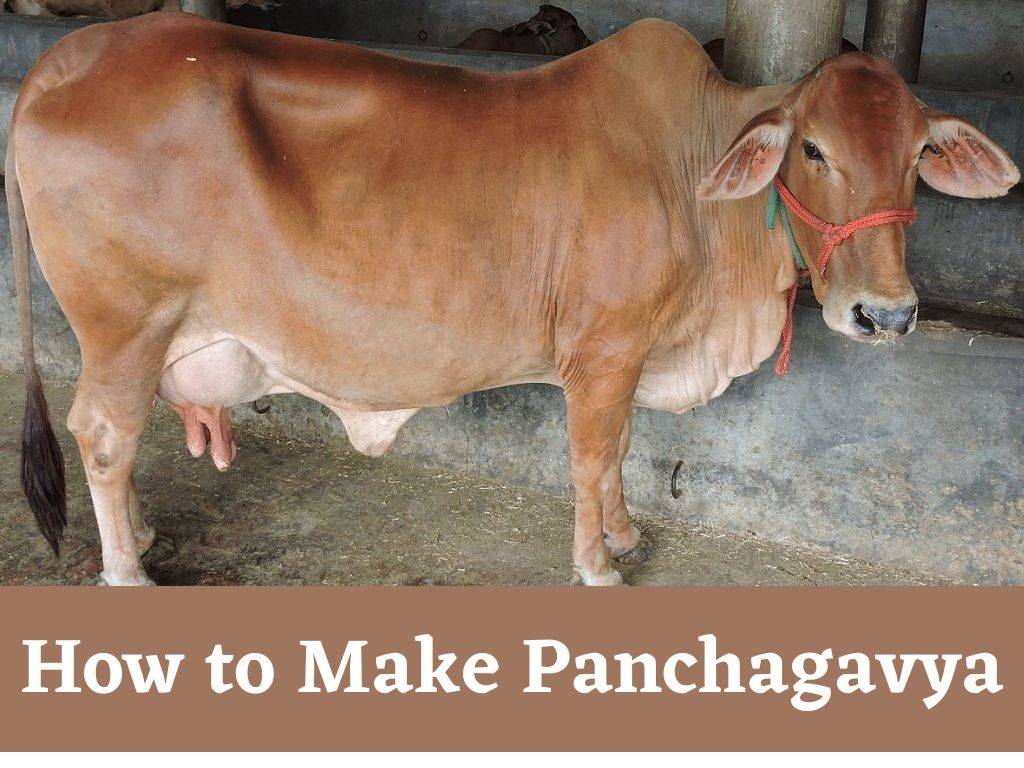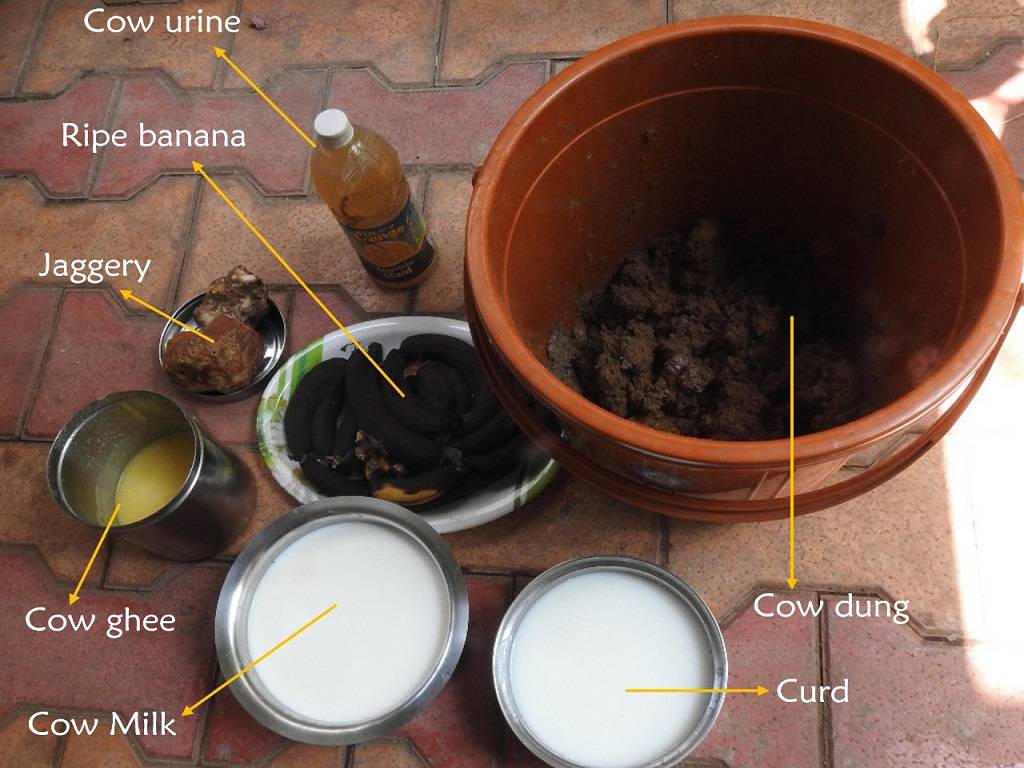
In Ayurveda and conventional Indian therapeutic procedures, panchgavya refers to cow-derived milk, dung, ghee, and curd. It has invaluable medicinal significance. The Panchgavya therapy is known as "Cowpathy" in Ayurveda.
In India, the cow is revered as a divinity known as "Gaumata," denoting its nurturing qualities similar to a mother. Panchagavya is advised by Ayurveda to heal illnesses of several systems, even severe ailments, with hardly any adverse effects. It can contribute to the development of a healthy population, alternative energy sources, the fulfillment of nutritional needs, the eradication of poverty, a pollution-free environment, organic farming, etc. Panchgavya can also help return soil fertility, earthworm development, shield crops from bacterial and fungal illnesses, etc., to the environment.
Let’s look at how we can prepare our own panchgavya through simple steps even though it is sold commercially in the Indian market.
Ingredients for Preparing Panchagavya
The name Panchagavya translates roughly to "Five products of the cow." As the name implies, it uses five cow-derived products along with a few other natural components to ferment. What you need to make this magic potion is listed below. Keep in mind that any products derived from cows must be of the Desi breed.
Ingredients:
-
Cow dung - 7 kg
-
Cow ghee - 1 kg

Mix the above two ingredients thoroughly both in the morning and evening hours and keep it for 3 days
-
Cow Urine - 10 liters
-
Water - 10 liters
After 3 days mix cow urine and water and keep it for 15 days with regular mixing both in the morning and evening hours. After 15 days mix, the following and panchgavya will be ready after 30 days.
-
Cow milk - 3 liters
-
Cow curd - 2 liters
-
Tender coconut water - 3 liters
-
Jaggery - 3 kg
-
Well-ripened poovan banana – 12 nos.
Procedure
-
According to the preceding sequence, all the aforementioned components can be put into a wide-mouthed mud pot, concrete tank, or plastic container.
-
The container has to be left open in a shaded area. Twice daily, in the morning and the evening, the contents have to be stirred.
-
After 30 days, the Panchagavya stock solution will be available. (Be careful not to combine buffalo products.
-
Local cow breed's produce is more potent than those from foreign breeds.
-
To prevent houseflies from laying eggs and the development of maggots in the solution, it should be maintained in the shade and covered with a wire mesh or plastic mosquito net.
- If sugarcane juice is not readily accessible, mix it with 500 g of dissolved jaggery in 3 liters.
Suggested Dose
Spray system: In comparison to the higher and lower concentrations examined, the 3% solution in the spray system was shown to be the most effective. For all crops, the optimal ratio is three litres of Panchagavya for every 100 litres of water. The 10-liter power sprayers may require 300 ml/tank. Sediments must be filtered before being sprayed with a power sprayer, and manually powered sprayers must have a nozzle with larger particle size.
Flow system: Either drip irrigation or flow irrigation can be used to combine the Panchagavya solution with irrigation water at a rate of 50 litres per acre.
Treatment for seeds and seedlings: Panchagavya 3% solution can be used to soak seeds or dip seedlings prior to planting. A 20-minute soak is a plenty. Before planting, rhizomes of turmeric, ginger, and sugarcane can be soaked for 30 minutes.
Seed storage: Before drying and storing the seeds, they can be dipped in a 3% Panchagavya solution.
Frequency Of Spraying
|
S.I. No. |
Different Phases |
Spraying Period |
|
1. |
Pre-flowering Stage |
Once in 15 days, @ sprays depending on crops |
|
2. |
Flowering and pod setting Stage |
Once in 10 days |
|
3. |
Fruit/ Pod maturation Stage |
Once during pod maturation |
Panchagavya's Benefit on Plants
Leaf: Panchagavya helps the plants to grow larger leaves and a denser canopy. To maximize biological efficiency and enable the production of metabolites and photosynthates, the photosynthetic system is engaged.
Stem: Side shoots that grow from the trunk are strong and able to support a large number of mature fruits. The amount of branching is considerable.
Roots: The rooting is extensive and substantial. They also keep their freshness for a very long period. Additionally, the roots were shown to stretch out and expand into deeper strata. These roots help in maximizing nutrient and water uptake.
Yield: When land is switched from inorganic techniques of cultivation to organic farming, there will often be a yield downturn. The primary benefit of Panchagavya is its ability to successfully raise all crop production levels when the land is transformed from an inorganic to an organic cultural system starting in the first year. All crops have a 15-day head start on the harvest. It extends the shelf life of cereals, fruits, and vegetables while also enhancing their flavor. Panchagavya guarantees increased profit and release the organic farmers from debt by eliminating or substituting expensive chemical inputs.
Panchagavya Benefits on Animals
Pigs: Depending on the age and weight of the pig, panchagavya is diluted in either drinking water or feed at a rate of 10 to 50 ml/ pig. Ailing pigs quickly recover and also put on weight.
Sheep and goats: After you give 10 to 20 ml of Panchagavya each animal every day, depending on their age, the goats and sheep maintain good health and put on additional weight.
Poultry: The birds became healthier and more disease-free when they are given Panchagavya in feed or drinking water at a rate of 1 ml per bird each day. If given for longer periods, they produce larger eggs.
Panchagavya Benefits to Humans
When consumed orally by both animals and humans, the living microorganisms in Panchagavya stimulate the immune system and produce numerous antibodies that are directed against the microorganisms that were consumed. It has vaccine-like effects. Animals and humans that experience this reaction have higher immune systems, which help in both disease prevention and treatment. It rejuvenates youth and delays the aging process.
The other ingredients in Panchagavya enhance appetite, digestion, assimilation, and the removal of toxins from the body. Complete relief from constipation. As a result, both animals and people have healthy bodies with beautiful skin and hair.











